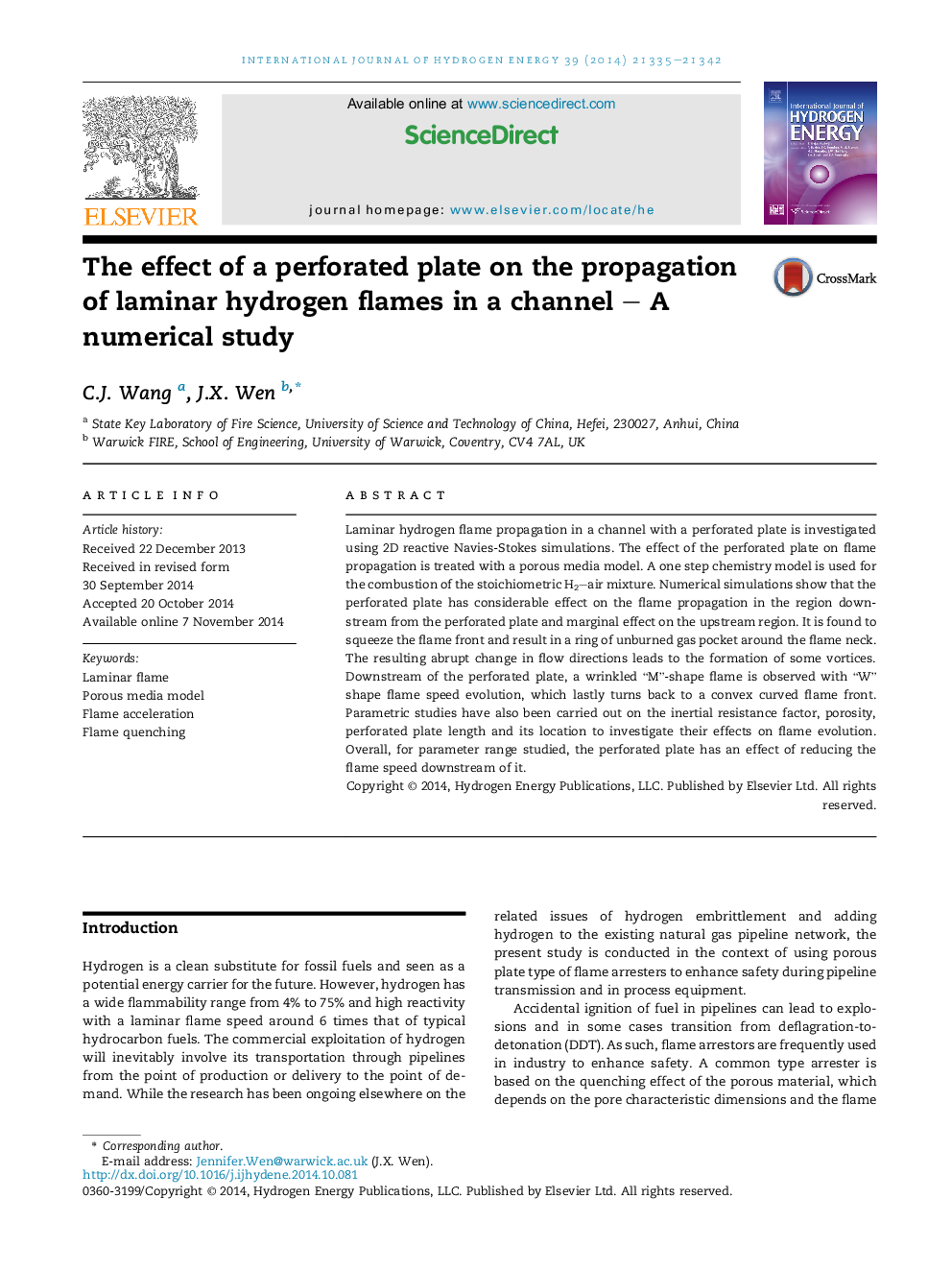| Article ID | Journal | Published Year | Pages | File Type |
|---|---|---|---|---|
| 7716962 | International Journal of Hydrogen Energy | 2014 | 8 Pages |
Abstract
Laminar hydrogen flame propagation in a channel with a perforated plate is investigated using 2D reactive Navies-Stokes simulations. The effect of the perforated plate on flame propagation is treated with a porous media model. A one step chemistry model is used for the combustion of the stoichiometric H2-air mixture. Numerical simulations show that the perforated plate has considerable effect on the flame propagation in the region downstream from the perforated plate and marginal effect on the upstream region. It is found to squeeze the flame front and result in a ring of unburned gas pocket around the flame neck. The resulting abrupt change in flow directions leads to the formation of some vortices. Downstream of the perforated plate, a wrinkled “M”-shape flame is observed with “W” shape flame speed evolution, which lastly turns back to a convex curved flame front. Parametric studies have also been carried out on the inertial resistance factor, porosity, perforated plate length and its location to investigate their effects on flame evolution. Overall, for parameter range studied, the perforated plate has an effect of reducing the flame speed downstream of it.
Related Topics
Physical Sciences and Engineering
Chemistry
Electrochemistry
Authors
C.J. Wang, J.X. Wen,
